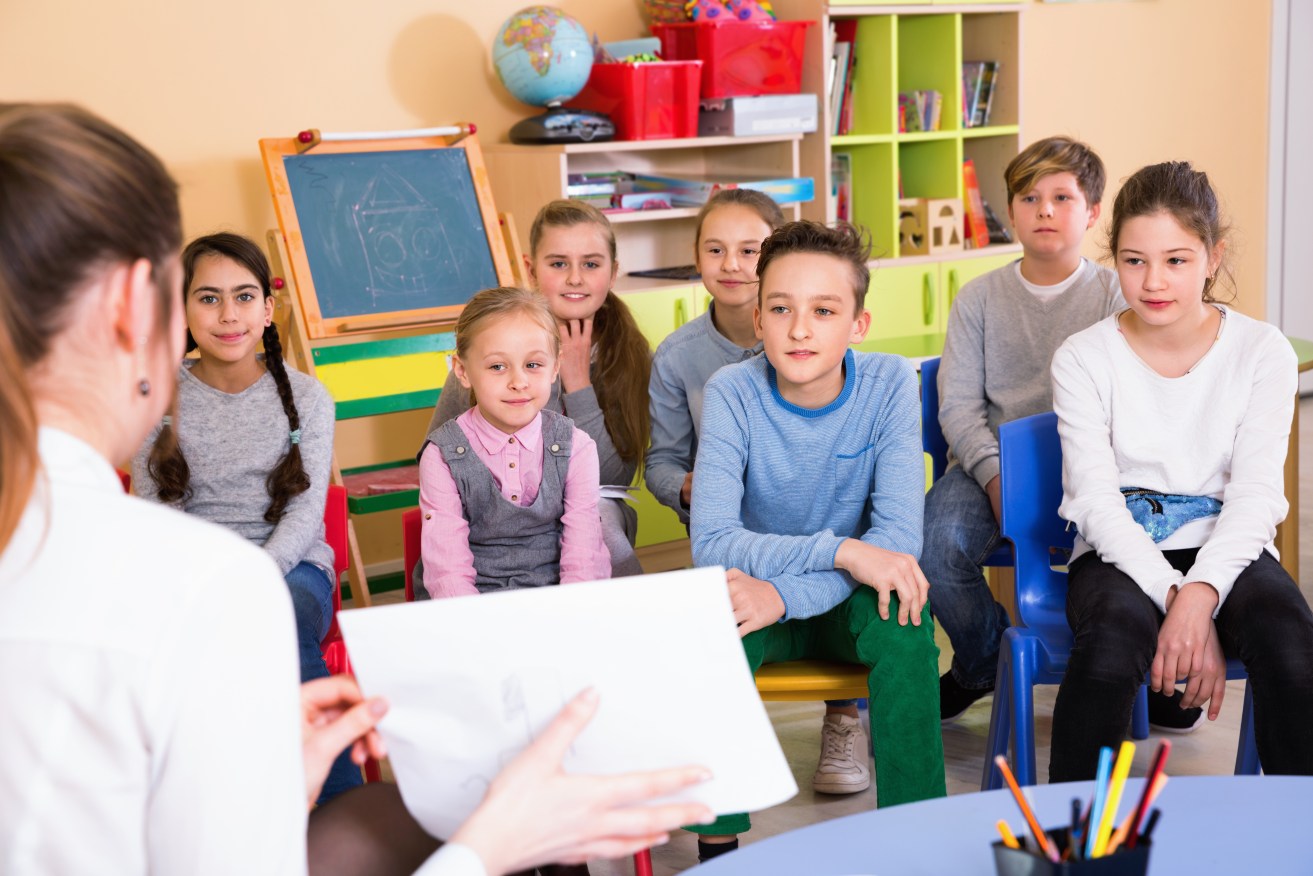Can children be taught to think their way out of difficult times?


In a new study, school children were taught how to think creatively about their real-world problems. Photo: Getty
During COVID-19 lockdowns, one of the main worries for parents was how their children were affected by the endlessly gloomy news and separation from their social and school lives.
The hangover continues.
Last year, as The Sydney Morning Herald reported, “students have been more distracted, disobedient and unsettled in their friendships since last year’s lockdown.”
Teachers were concerned that “the protracted isolation has had a lingering effect on children’s development and social maturity”.
This has, the SMH notes, led experts to call on the government to study the widespread effects of having two years of disrupted learning.
How we can prepare kids for tough times
There’s a lot of talk about resilience in childhood. Resilience being the capacity to withstand or to recover quickly from difficulties. One might say it’s the ability to navigate and deal with problems.
There’s a lot of literature and advice about how to build resilience in kids. A lot of it is wordy, and if not vague, then not entirely persuasive or instinctively elemental.
To an extent, much of the advice from psychological and mental health services can read as a long wish list for parents as to what we might want to see our children achieve socially – have them make connections and engage with their peers; overcome their feelings of helplessness by helping others; have them nurture a positive view of themselves.
Yes, sure. But how?
There is no magic bullet of course. But a new and intriguing study from Ohio State University feels a like a hint of what one might look like.
The idea was to teach primary school students how to be creative in order to increase their resilience in the face of real-life problems.
Researchers trained third, fourth and fifth graders to use literary techniques such as perspective shifting, counter-factual thinking and causal thinking to improve creativity in dealing with their own difficulties.
What are these techniques?
Counter-factual thinking allows a person to create possible alternatives to events that have already occurred in life.
It’s not so much wishful thinking, as allowing a person to creatively think about alternative scenarios and find different approaches in the future.
It’s a tricky technique because it relies on a “what might have been” analysis, which can involve trying to rewrite tragic history, and leave you in a hole.
But with aided navigation, it can be helpful in understanding the past and feeling more confident about the future, and how you could best behave in it.
Causal thinking is looking at why things have happened or might happen.
Perspective shifting is a powerful way of understanding what might be going on with your family and friends and the world at large. It also allows you to step outside the problem.
Lead author Dr Angus Fletcher, who is a professor of English and story science at The Ohio State University and member of the university’s Project Narrative, said there were concerns about the resilience of children since COVID-19.
There was a sense that “many kids are having a hard time in school and in life,” Dr Fletcher said.
“Creativity training can help kids come up with a second plan when things aren’t working out for them.”
This can sound a bit woolly, but …
The techniques were seen to help the young study participants to think up with new, creative and practical ways to solve problems, Dr Fletcher said.
In the abstract of his paper, he and his colleagues write:
“Narrative creativity training has recently shown promise as a tool for increasing self-efficacy and resilience in adult learners.”
In fact, Dr Fletcher ran a successful narrative and resilience program with the US Army – and for which he was awarded the Public Service Commendation Medal.
The study
According to a statement from Ohio State, the researchers did two separate studies involving students attending a summer camp in a Columbus suburb.
In one study, 32 students were split into two groups.
In the control group, the children were told to “identify a special quality about themselves”. They were told this was “their special power that could help them solve any problem”.

Students given literary techniques to solve problems, tended to persevere more than kids in a control group.
In the creative group, the students were “told to think of a friend who did something special and think of them as their ‘creative friend’ who could help them solve any problem”.
This type enabled the kids to look at a problem through the eyes of someone else.
“When you ask people to shift their perspective and imagine receiving advice from a friend, you get a lot more creative and effective solutions to problems than just trying to solve the problem yourself,” Dr Fletcher said.
And that’s what the study found
In one part of the study, teachers identified a problem that was challenging for their students. For example, not being able to go to a friend’s birthday party because you’re going to be out of town with your parents.
Students also thought about a challenging problem in their own lives.
Some problems that were mentioned included “my brother has a communication disorder”, “my dad has to be away for two months” and “my sister bullies me”.
The results
In the control group that didn’t undergo perspective-shift training, “fewer than half of the students were able to provide a solution to the age-typical problems and almost none were able to provide a solution to their own problems”.
But 94 per cent of those who were trained in perspective-shifting provided a solution to both.
Judges (trained teachers) also rated the children’s solutions on creativity, as assessed by how surprising or unique the solutions were.
With the intervention, the average creativity score was 6.44 out of 10 (moderate creativity) compared to 3.05 (low creativity) for those who did not receive the perspective-shifting intervention.
These results showed “how creativity training could boost children’s sense of self-efficacy – the belief that they had some control and power over their own lives”, Dr Fletcher said.
Perhaps the most interesting finding was how these creative techniques enabled and emboldened the students to keep working on a potential solution.
When considering their problems, “most of the children who received the intervention came up with a potential solution”.
But 15 of 16 children in the control group essentially gave up, Dr Fletcher said.
They either said “they didn’t know how to fix their problem, or displayed some version of magical thinking, such as saying they could become a superhero”.
The second study
A second longitudinal study involving 28 students in the same camp was designed to test the effects of a five-day, 10-hour narrative creativity curriculum on creativity, self-efficacy and resilience.
In addition to perspective shifting, the students were also trained in other narrative creativity techniques, such as causal thinking.
“If children can’t solve a problem, we train them to back up and think about what they are trying to accomplish – the why problem,” Dr Fletcher said.
“Step back and say why does this matter? We often find that if you think more broadly about what you are trying to accomplish, and why it is so important, then you can see there are other ways of getting what you want.”
At the end of the curriculum, the students were presented with age-typical problems similar to the first study and also examined one of their own problems.
In order to test resilience, the researchers threw in a curve ball when the children presented their proposed solution to their problems. The researchers told the children that their ideas wouldn’t work. And sent them back to the drawing board.
Results showed that every student who took the five-day curriculum was able to provide a second solution to both the age-typical and personal problems.
“With this training, the children were unfazed by being told their first solution didn’t work. They came up with a second plan, which is a good test of resilience,” Dr Fletcher said.
A hopeful message
Fletcher said this study provides a hopeful message. There are things we can do to help children cope with their problems.
“We are at this moment in our society where our kids need help. We found that before this training, kids had this propensity to just give up when faced with problems,” he said.
“That could lead them to get angry, or embarrassed that they can’t solve their problems, or look for adults to offer solutions.”
Narrative creativity training can teach children there are ways to approach real-life problems that don’t have easy answers, he said.








